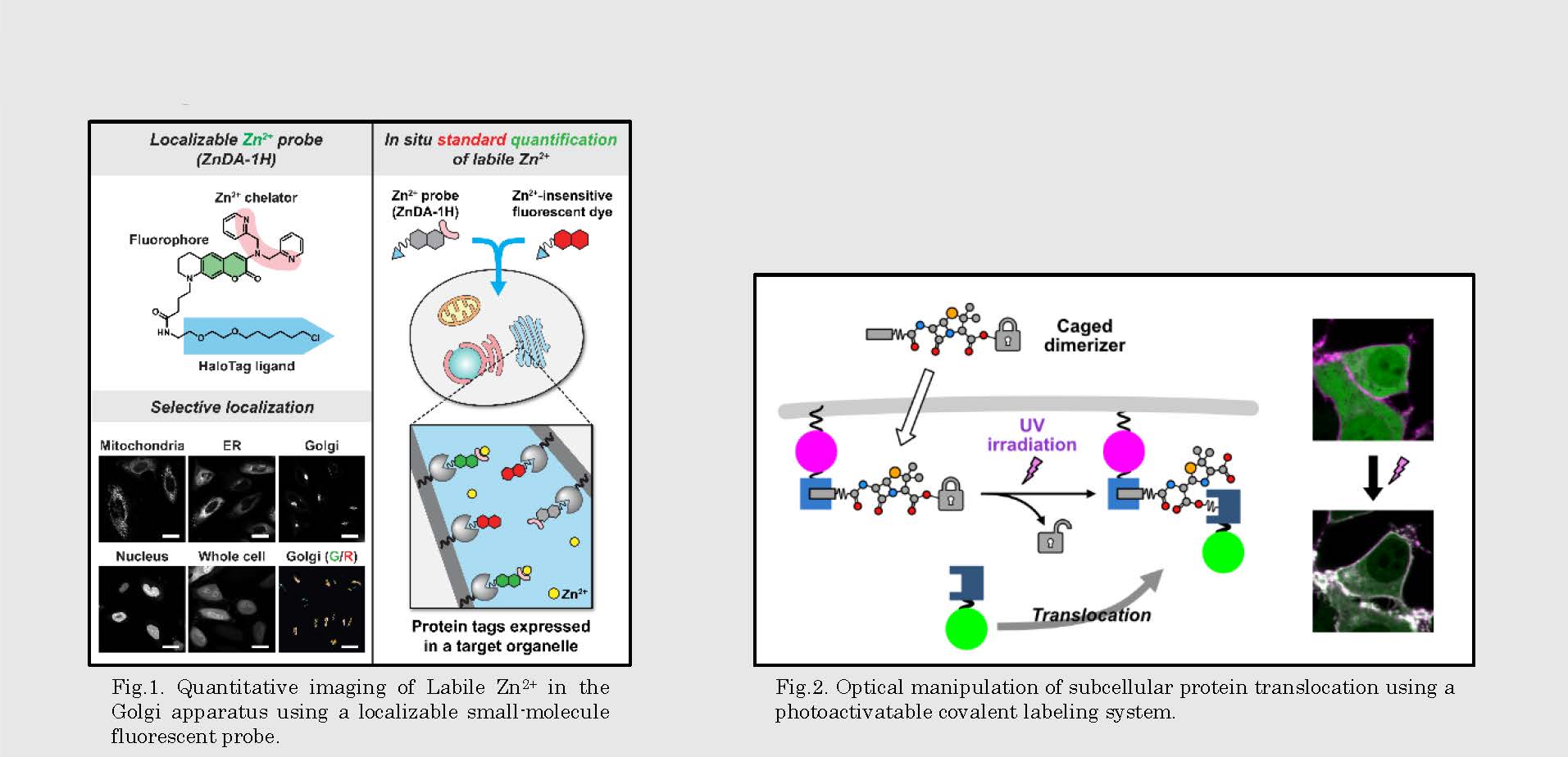
IMRAM
Institute of Multidisciplinary Research for Advanced Materials, Tohoku University
東北大学
多元物質科学研究所

LAST UPDATE 2021/05/01
-
研究者氏名
Researcher Name小和田俊行 Toshiyuki KOWADA
准教授 Associate Professor -
所属
Affiliation東北大学 多元物質科学研究所
有機・生命科学研究部門 細胞機能分子化学研究分野
Institute of Multidisciplinary Research for Advanced Materials, Tohoku University
Division of Organic- and Bio-materials Research, Cell Functional Molecular -
研究キーワード
Research Keywords光応答性小分子
機能性蛍光小分子
蛍光イメージング
Photo-responsive Small Molecules
Functional Fluorescent Molecules
Fluorescence Imaging
- 研究テーマ
Research Subject -
機能性小分子を用いた生体機能の可視化と制御
Visualization and manipulation of biological functions using functional small molecules
研究の背景 Background of the Research
複雑な生体機構を理解するためには、生体内で働く細胞や生体分子の機能を可視化する手法が有力です。さらに、特定の生体分子の機能を思いのままに操ることができれば、その理解をより一層深めることが可能です。近年、時間・空間分解能に優れた「光」によるイメージングや生体機能制御技術への関心が高まっています。
Visualization of functions of living cells and biomolecules is highly useful for understanding complex biological systems. Moreover, the manipulation of the function of target biomolecules will help us to further understand them. Recently, imaging and controlling various biological functions using optical tools with high spatiotemporal resolution have been attracting more interest.
研究の目標 Research Objective
物理有機化学と有機合成化学の知識・技術を駆使することで機能性小分子を設計・合成し、細胞や生体分子の機能を可視化するツール開発を目指しています。特に、生体分子や生体内環境変化を検出可能な蛍光プローブの開発や、光応答性の小分子を開発することで、生体機能制御の達成を目指しております。
The main objective of our research is to design and synthesize functional small molecules by utilizing the knowledge and techniques of physical and synthetic organic chemistries. Particularly, we aim to develop photo-responsive small molecules for the manipulation of biological functions, as well as fluorescent probes with detectability of biomolecules and environmental changes.
研究図Figures

Fig.2. Optical manipulation of subcellular protein translocation using a photoactivatable covalent labeling system.
論文発表 / Publications
Nat. Chem. Biol. 2024.; ACS. Chem. Biol. 2023, 18, 340–346.; ACS Sens. 2022, 7, 748–757.; Angew. Chem. Int. Ed. 2021, 60, 11378–11383.; Cell Chem. Biol. 2020, 27, 1521–1531.; ChemBioChem 2019, 20, 1382–1386.; Nat. Chem. Biol. 2016, 12, 579–585.; J. Am. Chem. Soc. 2011, 133, 17772–17776.
研究者連絡先 / HP
- toshiyuki.kowada.d5
 tohoku.ac.jp
tohoku.ac.jp - http://www2.tagen.tohoku.ac.jp/lab/mizukami/
- https://researchmap.jp/Toshiyuki_Kowada